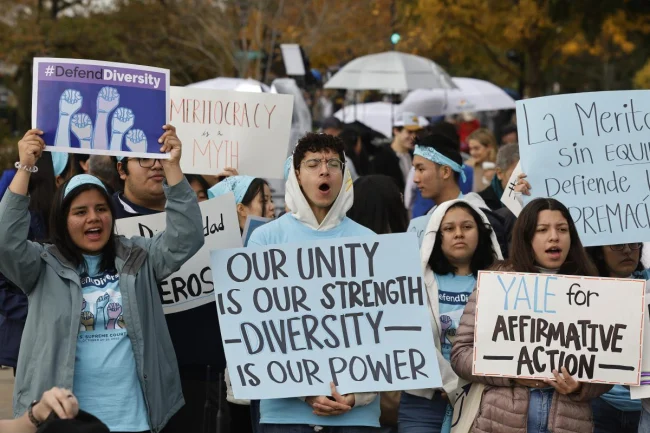The University of North Carolina at Chapel Hill is the country’s oldest and arguably most prestigious public university. It was founded in 1789 and they’ve been using affirmative action as a means of admitting students into their school for over 40 years. However, the Supreme Court decided in Students for Fair Admissions v. University of North Carolina that the use of affirmative action in the admission of students to their school is unconstitutional.
First of all, what is affirmative action? Affirmative action is the active effort to improve employment, education, and other opportunities for minorities or marginalized groups by a set of regulations and policies within an organization.
Students for Fair Admissions (SFFA) sued the University of North Carolina (UNC) in November of 2014 claiming their admissions process was unethical and unconstitutional. Since then arguments have been going back and forth, with the case being decided only recently.
As a result of the case, the group won the lawsuit, causing UNC to pay them $4.8 million in legal fees and expenses. The result of the case was 6-3 in favor of Students for Fair Admissions, stating the consideration of race in college admissions violated the rights outlined in the 14th Amendment, and was therefore unconstitutional.
So, how has this affected the demographics of first-year and undergraduate students? The most noticeable differences are in the diversity among primarily Asian students. In the Fall of 2022, the percentage of Asian students admitted to the school was 14.3%. In the Fall of 2024, that number jumped to 25.8%. With an average of 7,632 students admitted between the two years, that’s an average of over 870 more Asian students in the 2024 admissions compared to 2022. There wasn’t much change in the White population, as it was 64.9% in the Fall of 2022 and 63.8% in the Fall of 2024.
With this, it is evident that UNC was using Affirmative Action meaning they did consider race in the admissions process. There are many mixed opinions from many people, including students who attend the school. A lot of students thought that the concept promoted diversity among the student body. In contrast, a lot of students thought it shouldn’t be implemented since it discriminates against people of various races, therefore giving them a smaller chance of admission even though they could’ve had the same statistics and criteria met by a student of a different race who did get admitted.
An anonymous student who attends UNC stated, “This is a huge step backward in trying to make education fair and equal. In an application system built upon racial inequality, it is impossible to exclude race from the acceptance process without disproportionally harming minority groups. An SAT tutor, extracurriculars, sports, college essay editors, are all luxury and make the application process catered towards wealthier majority demographics. I attended a diverse high school and witnessed how diversity in the classroom opens up perspectives and ideas that I would never have otherwise considered. Going into college I completely understood why affirmative action was necessary. Diversity benefits everyone and affirmative action is necessary to increase opportunity for students who have not been fairly represented in higher education thus far.”
And this goes for the majority opinion throughout the student body, as well. Affirmative action has seemed to create a sense of conflict within the school, as it is a controversial topic that many people have mixed opinions on that isn’t limited to students who attend the school. Depending on how you look at it, affirmative action creates a chance for students of marginalized groups to be admitted into a prestigious school thus creating a diverse student body, or it’s just a tool for discrimination used against people of certain races creating an unfair admissions process. How do you side?







